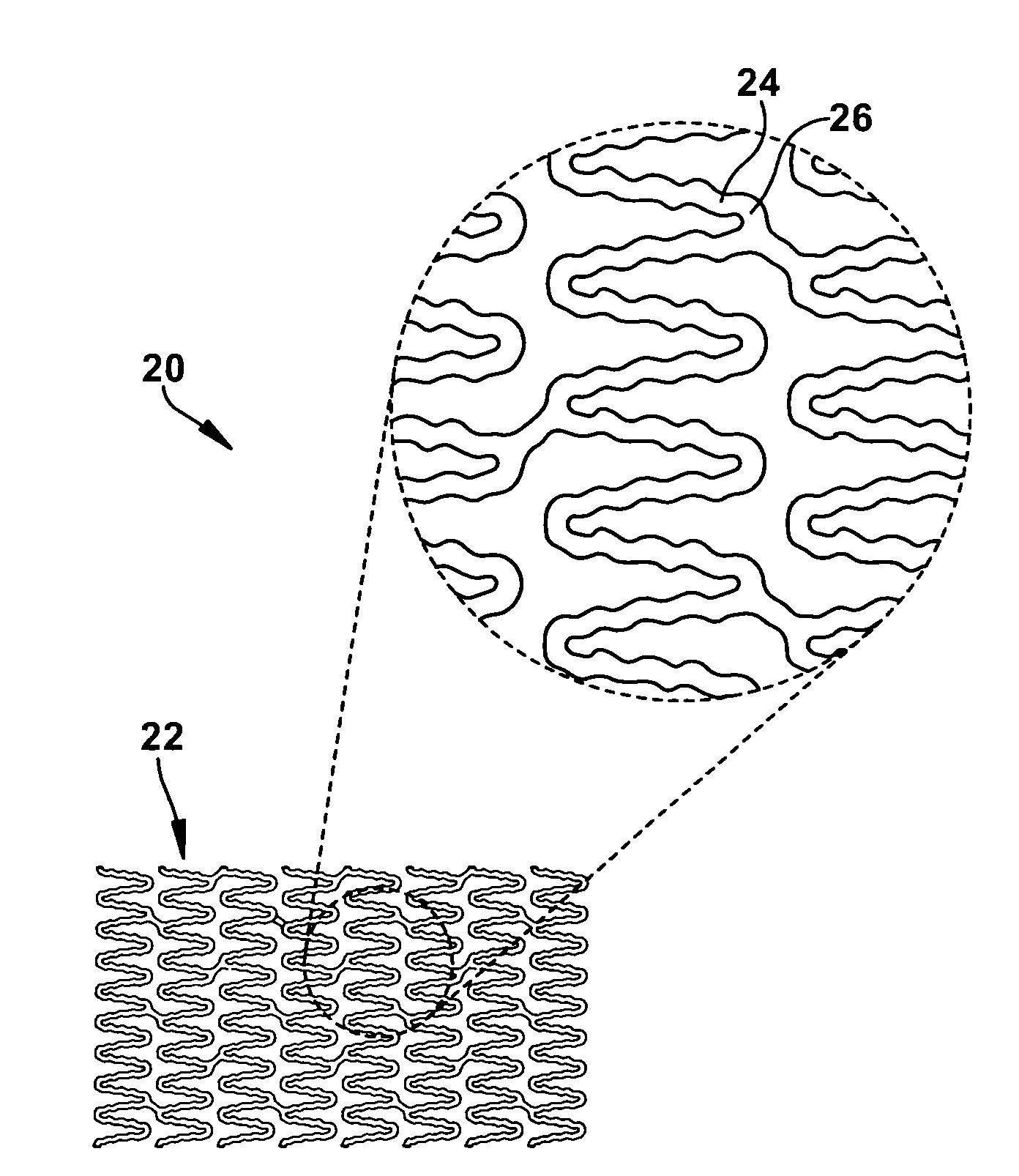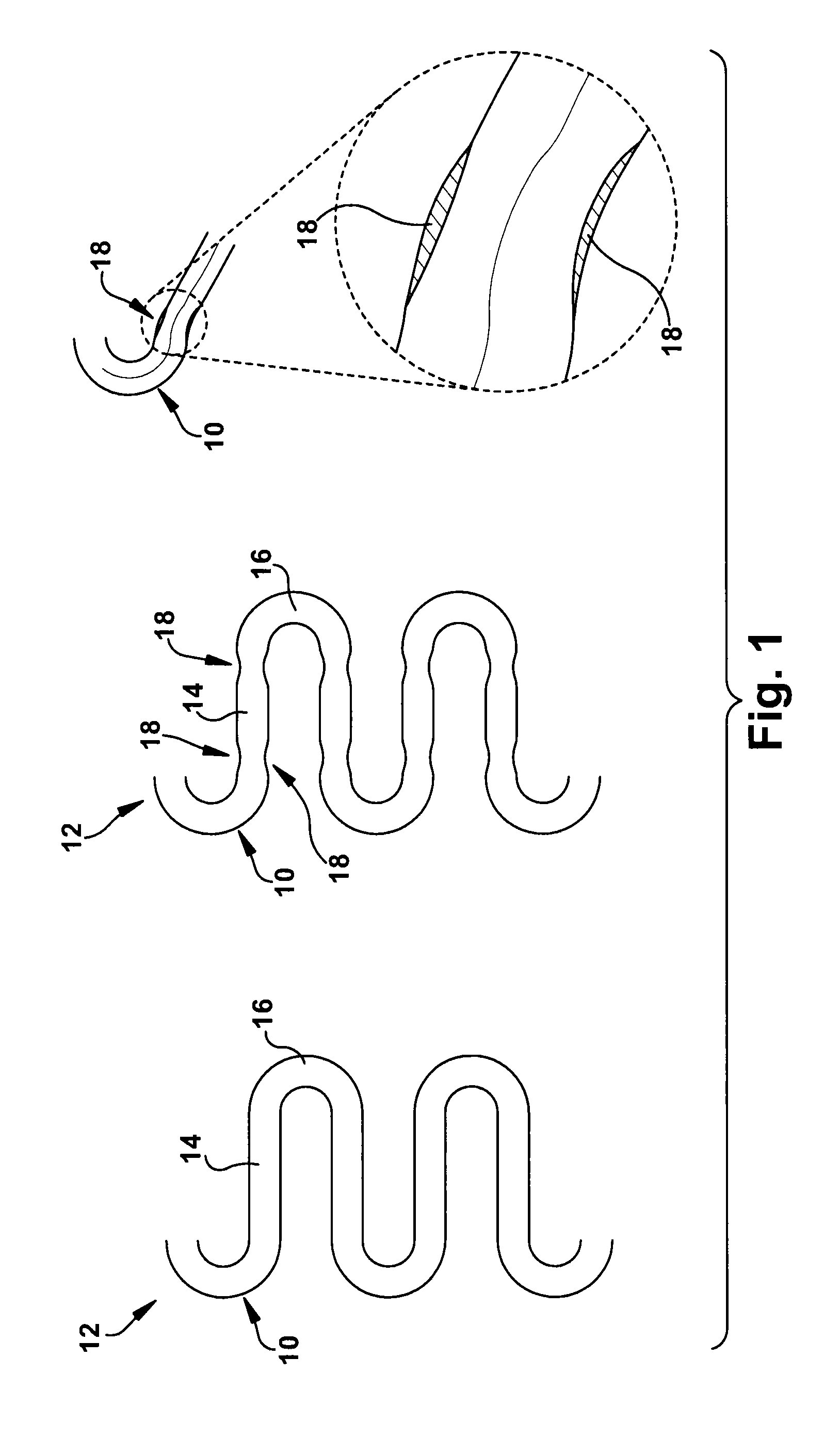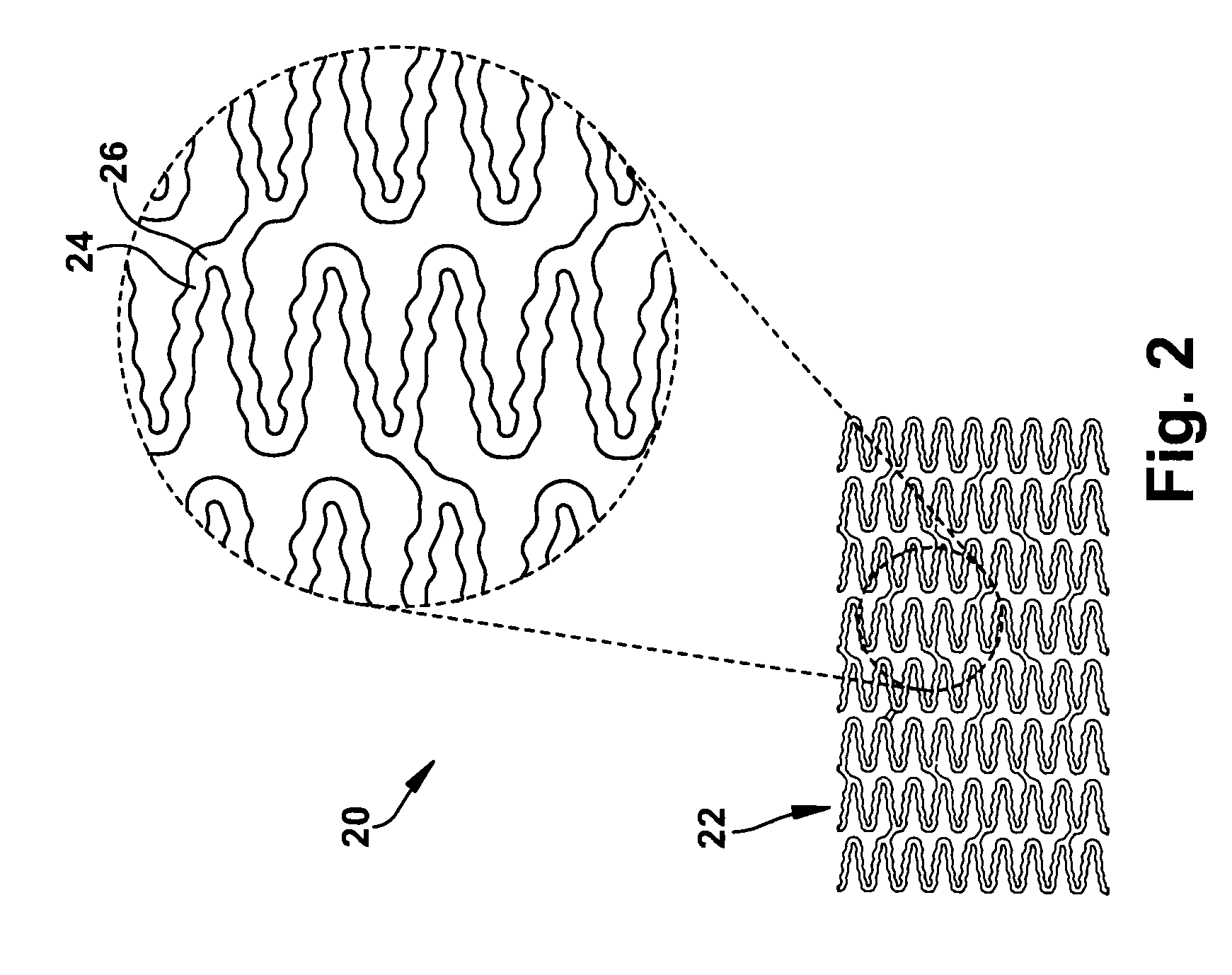Stent having a bridge structure
a bridge structure and stent technology, applied in the field of stents, can solve the problems of premature fatigue of the structural part, damage to the respective element within the bridge structure of the stent, and the increasing loss of the supporting force of the stent, so as to achieve the effect of greater volume taken up by plastic deformation energy
- Summary
- Abstract
- Description
- Claims
- Application Information
AI Technical Summary
Benefits of technology
Problems solved by technology
Method used
Image
Examples
Embodiment Construction
[0034]In contrast to FIG. 1 already discussed above, FIG. 2 shows a stent 20 according to an embodiment of the present invention with a bridge structure 22 in which bridges 24 are coupled to one another at node regions 26.
[0035]The bridges 24 are designed with an undulated shape along at least a portion of their length extending between two node regions 26, said undulated shape having been formed from a process such as cutting it out by a laser cutting process from a thin-walled material of a jacket surface of the stent 20. The undulated shape is designed with a number of bulges as a sequence of concave and convex arches or alternating radius elements. In the illustrative embodiment shown, such concave and convex arches are formed in succession on a single bridge 24. There can be between 3 and 12 such concave and convex arches, and in particular between 5 and 10 arches.
[0036]The undulated shape of the bridges 24 can be provided in some areas of the stent 20, i.e., not all bridges 24...
PUM
 Login to View More
Login to View More Abstract
Description
Claims
Application Information
 Login to View More
Login to View More - R&D
- Intellectual Property
- Life Sciences
- Materials
- Tech Scout
- Unparalleled Data Quality
- Higher Quality Content
- 60% Fewer Hallucinations
Browse by: Latest US Patents, China's latest patents, Technical Efficacy Thesaurus, Application Domain, Technology Topic, Popular Technical Reports.
© 2025 PatSnap. All rights reserved.Legal|Privacy policy|Modern Slavery Act Transparency Statement|Sitemap|About US| Contact US: help@patsnap.com



